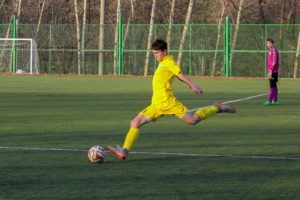The summer is coming to a close and preseason for fall sports has begun.
Is your youth athlete ready for the season?
This year it is estimated that 60 million children and teens will participate in youth sports
activities. This is great news! The benefits of athletics are numerous:
- teamwork
- healthy habits
- discipline
- self esteem
- leadership
Unfortunately, we see many of these youth athletes in our clinic. Most commonly we see
sprains, strains and tendinitis. However, stress fractures and concussions also have a high
occurrence in youth sports.
Rates of injury are rapidly increasing, with 62% of injuries occurring during practice. Many
of these are a result of overuse and burn out of the athletes.
But why?
There seems to be more competition and higher intensity of training at a younger age. In
addition, fewer students are achieving “physical readiness” – the athletes ability to
meet the demands of the sport.
We assume kids will be able to perform on the field even though today’s kids are less
active outside their sport’s season. Therefore, 50% of injures in organized sports could be
avoided by assuring physical readiness.
The best way to do this is get kids active at a young age. They need to jump rope, play tag,
swim, kick, and run. These activities educate a child’s body to jump, twist, and turn, so they
can compete safely in sports.
Sports require complex and coordinated movements that occur when muscles and joints
must respond to extreme movements with ease. This is first happens on the playground.
However, when a child sits around playing video games, their body is not going to be ready
for the demands on the athletic field.
So how can we help young athletes participate more safely and enjoy the benefits of
youth sports?
1. Preseason conditioning
Injures often occur when athletes are fatigued. Preseason conditioning decreases injuries and
increases the athletes performance.
2. Adequate Hydration
Heat related injures are particularly dangerous in children because they perspire less. The
result is dehydration or heat stroke.
3. Appropriate Equipment
Appropriate equipment should be issued and fit to each child. Equipment should be checked for
damage at the start of the session and again weekly. Since children and adolescents grow quickly,
proper fit should be rechecked regularly throughout the session.
4. Nutrient dense diet
A wholesome well balanced diet is essential to injury prevention and performance. An athlete
needs a balance of proteins to build and repair tissue, carbohydrates for energy, fruits and
vegetables for healing antioxidants. Many children, especially teenagers consume a lot of empty
calories that cause a nutrient deficiency. Nutrient dense foods will aid in repair of the body’s
cells, but deficits can result in injury. What you put in your body fuels performance and health.
5. Adequate Sleep
The body requires 8-10 hours of sleep to allow proper recovery and rebuilding of tissue stressed during
athletics. Although it may be counter intuitive, you must stop, rest, and recover. “Downtime”
will allow you to achieve your goal of a high level of fitness.
6. Proper Warm up and Cool Downs
Prior to practice or games, a dynamic warm up is needed to get blood and oxygen to the muscles.
Equally as important, cool down after play is needed to allow the heart rate to return to its resting
level. Do not let your athlete arrive late or leave early and miss these vital parts of practice.
7. Know your Child and Their vulnerabilities
Having a past injury puts you at risk for another overuse injury (a result of repetitive
activity without proper rest). There is also an increased injury risk during growth spurts. Knowing
these things can allow you to monitor your child’s performance and get them help before an
injury puts them on the side lines.
Our goal is for youth athletes to play at their peak performance, injury free, while still being
able to handle the load of academics, friends, family, and other interests. If your child has had
previous injuries or complains of any discomfort as they start the season, a Functional
Movement Screen (FMS) will evaluate injury risk and if they are ready to return. The physical
therapist can then prescribe specific activities to strengthen the “weak links” and prevent further injury.
Call today to talk to a physical therapist and see if a Functional Movement Screen would benefit
your athlete.




